Restoration
At the end of the 19th century, farmers cleared vast forests of alder, maple, and massive cedar from the Snoqualmie River Valley. Nature seemed infinite, and over time farmers cleared the trees and shrubs right up to the riverbanks, not realizing that those riparian forests were central strands in the Valley’s web of life.
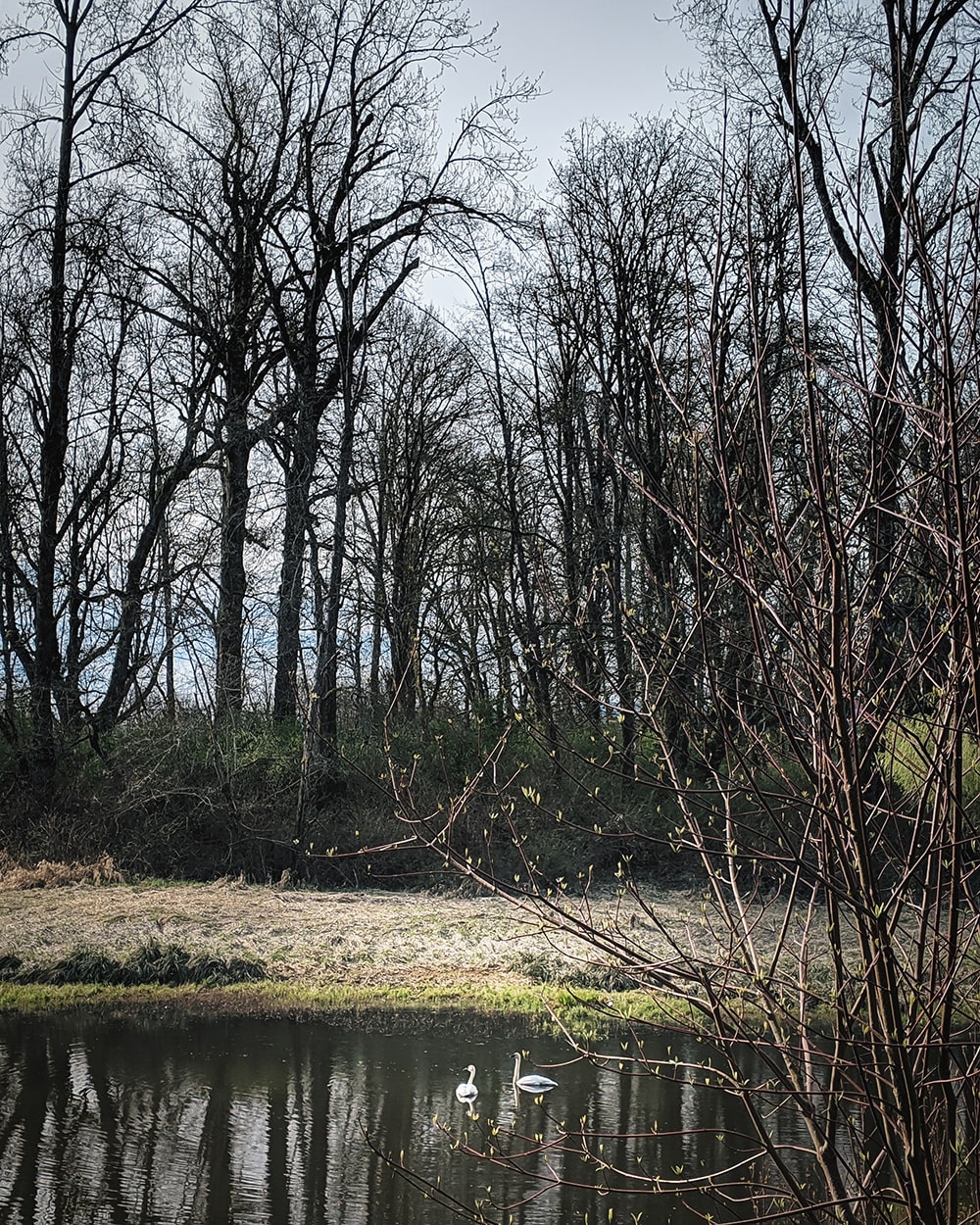 Stream-side forests filter silt and nutrients from runoff headed to the river, produce woody debris to shelter maturing salmon, and provide homes for a wide range of wildlife. Without streamside, or riparian, vegetation, precious farmland soil is lost to the river, fewer birds visit to regulate crop pests, and there are fewer homes for the native pollinators that ensure abundant crops.
Stream-side forests filter silt and nutrients from runoff headed to the river, produce woody debris to shelter maturing salmon, and provide homes for a wide range of wildlife. Without streamside, or riparian, vegetation, precious farmland soil is lost to the river, fewer birds visit to regulate crop pests, and there are fewer homes for the native pollinators that ensure abundant crops.
Today, Oxbow’s Conservation Team is working with enthusiastic volunteers and committed partner organizations to replant native riparian forests in our region and help rebuilt the dynamic and complex web of life that should surround our streams and rivers. With your help, we can create a landscape that supports people’s livelihoods, produces food, and still remains resilient, beautiful, and ecologically diverse.
Volunteer
We need your help to bring back salmon and rebuild a resilient landscape!
>> Learn more and register for volunteer opportunities
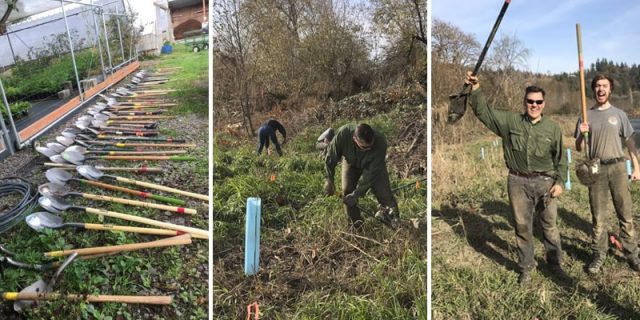
Ecological Restoration Projects
Explore our restoration, research, and wildlife monitoring projects below:
Riparian Restoration at Oxbow
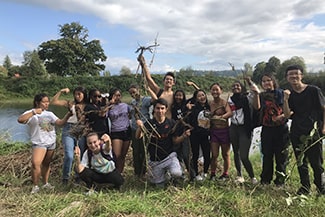
At Oxbow, taking care of our river and forest is deeply ingrained. Oxbow was one of the first Salmon Safe farms in Washington, and with a lot of help from Stewardship Partners and other collaborators, we’ve restored thousands of linear feet of riverbank to rapidly regrowing forest. Learn more about ecological restoration and our western Washington ecosystems! (Coming soon)
Upper Snoqualmie River Riparian Enhancement
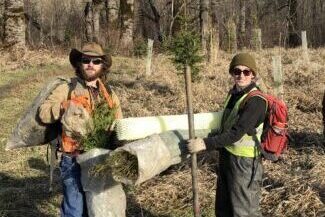
As of July of 2024 we completed the removal and planting portion of our most extensive restoration endeavor to date. With 11,000 native plants in the ground across 10 acres and supportive partnerships we are now in the monitoring and maintenance phase of this project. Read more on the challenges and successes of the first three years at our blog “Reviving Riverbanks” !
Fall City Floodplain Project
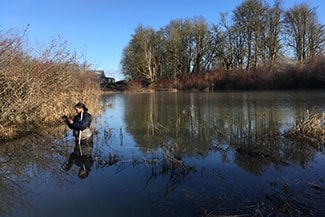
In coordination with King County, we are helping the Snoqualmie Tribe to restore riparian forest as part of the Fall City Floodplain Restoration Project. This is a large levee-setback project that is designed to improve habitat for a variety of wildlife including endangered Chinook salmon and thereby also improve the food supply for the Puget Sound southern resident Orca population. This exciting project, located just outside of the town of Fall City, is part of a $19 million dollar King County large capital restoration project intended to re-establish natural connections between the Snoqualmie River channel and 45 acres of floodplain habitat. Due to gravel that is naturally swept downstream by the Raging River into the Snoqualmie, this reach of the river is one of the most important and well-suited for spawning of endangered Chinook Salmon. Unfortunately, loss of floodplain forests and blocking of side-channels over the last 150 years has made it less suitable, but by removing 1300 feet of old levee and re-creating side channels, the county has re-established crucial rearing habitats where young salmon can escape during floods and find abundant food. Oxbow has been working closely with the Snoqualmie Tribe and King County over 5 years to restore floodplain forest to this habitat, the final stage of re-creating a healthy and abundant salmon habitat. By helping us plant 9,000 native plants this winter (and 16,000 over the next 3 years!) volunteers can be part of transforming a landscape and making a healthier river ecosystem.
Knotweed Restoration Project
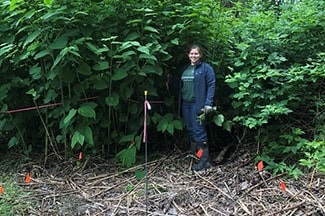
Knotweed is one of the worst invaders of streamside ecosystems in Washington. We are partnering with King County Weed Control Group to remove knotweed along 2,500 feet of riverbank at Oxbow, evaluate two alternate chemical treatment options, and restore native vegetation to the reach. We’re also testing the best ways to remove small stands without chemicals where organic certification requires it.
Read about our findings from 4 years of knotweed control and restoration in our report, here.
Reed Canarygrass Suppression Project
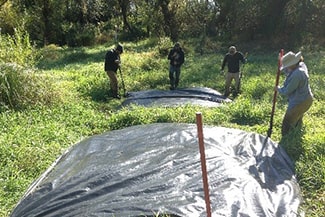
Part of wildlife conservation in the Snoqualmie Valley involves understanding how to support diverse habitats and native plants through ecological restoration of disturbed habitats. Many wetlands in the Pacific Northwest (and across North America) have been invaded by reed canarygrass, a tall European grass that chokes streams and shades out native plants. We are experimenting with a variety of treatments, including planting willow from “live stakes,” dense plantings of native sedges, and two pre-planting ground treatments to expand the options available for restoration practitioners fighting reed canarygrass.
Cherry Valley Floodplain Forest Restoration
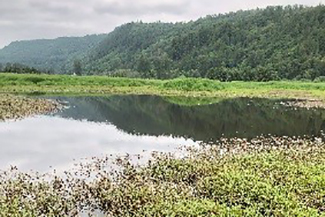
Oxbow’s conservation team is working with Ducks Unlimited and WA Dept. of Fish and Wildlife to improve habitat for fish and amphibians in the Cherry Valley Unit of the Snoqualmie Wildlife Management Area. This landscape is one that encompasses leased farmland, meadows, and a network of drainage channels and ponds. We are working with our partners to design native plantings that will create more forested conditions in parts of this site to cool waters for fish and increase habitat for forest-dependent red-legged frogs.
